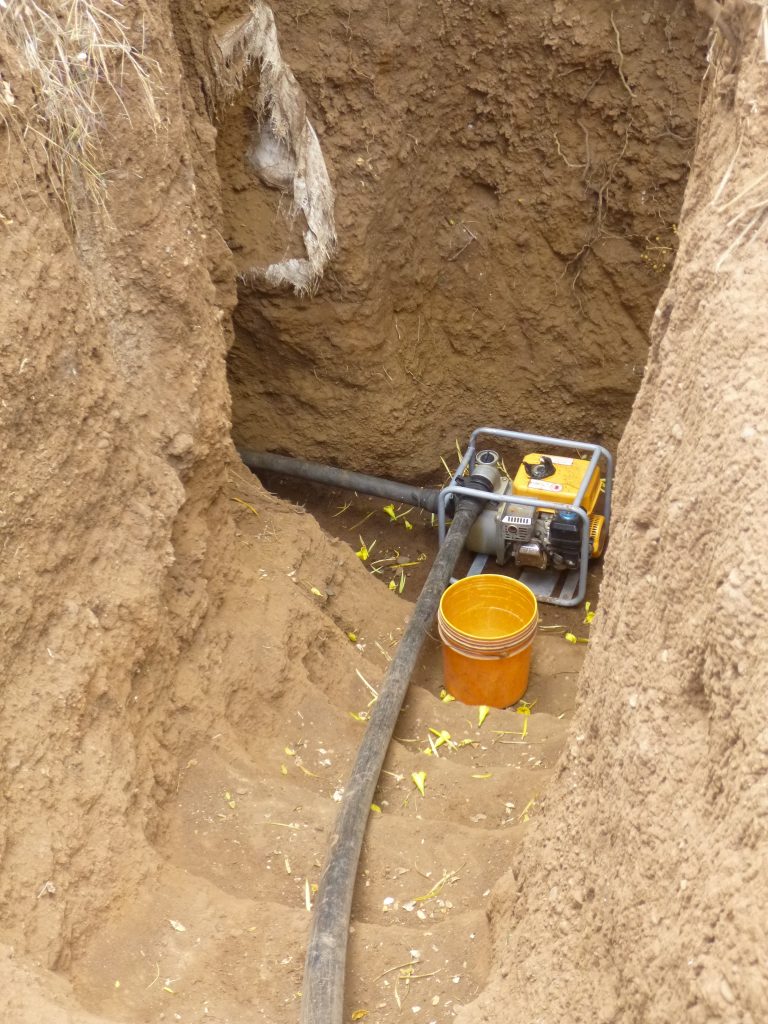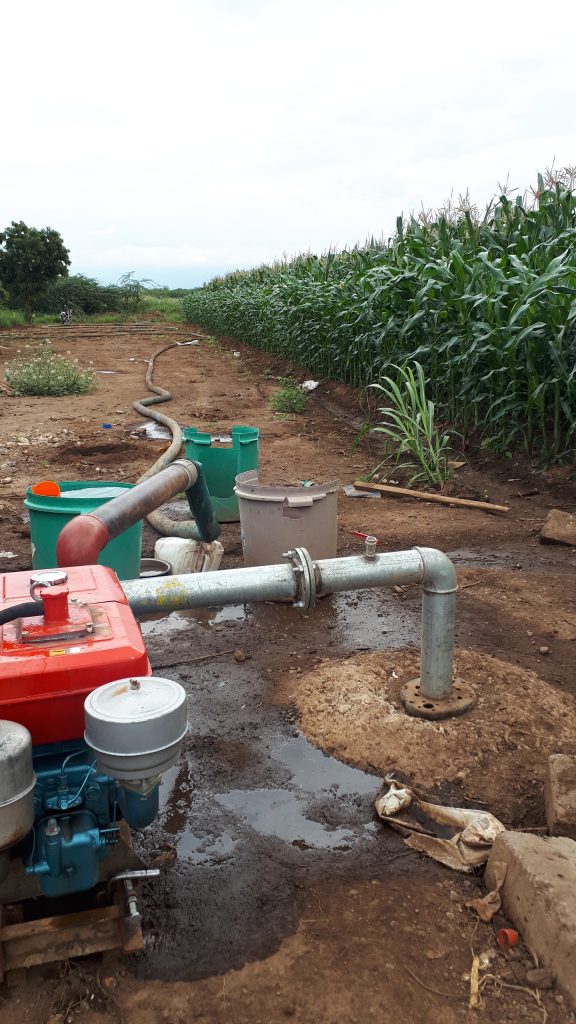In the following images you will see a number of scenarios which depict farmer-led irrigation development. Each image is followed by a short description explaining what has been implemented.

Farmers started this irrigation system by digging earthen canals from the water source to their fields. Later, they actively requested government support to line certain sections with cement, to reduce the need for maintenance and prevent water loss.

When rivers used for irrigation dried up, farmers started using shallow wells and petrol pumps to irrigate. By putting the pump closer to the water level, farmers’ saved on fuel and reduced the need for maintenance, leading to a “chamber” being dug next to the wells. Farmers grow maize, beans and vegetables, often for the market. There has been no government involvement.

On land previously farmed by a European settler and later by a state owned company before being abandoned, a group of ten small-scale farmers began irrigated production using a pre-existing canal to bring water from a stream flowing down a mountainside. Commercial crops of tomatoes and cabbages are grown, often on contract with local traders. In recent years farmers have been contracted to produce green beans and ‘baby corn’ for export.
Five years ago the system was selected for upgrading by a World-Bank funded project that installed an additional pipe up the mountainside enabling sprinklers to be driven by hydrological pressure.

Farmers have started irrigation using locally-available and affordable tools and materials and grow rice for the market. They organise their own water division and maintenance, and work together with (government) engineers and craftsmen to improve their infrastructure.

Using low-cost watering cans, farmers have started irrigating commercial crops such as cabbages. Although one plot may be small, the cumulative area under this type of irrigation can be much larger. The low initial investment costs make this technology accessible to everybody.

In the above image, an individual farmer from the city has purchased land in a rural area, drilled a borehole and installed a large pump. He has employed workers to cultivate for him and will sell his crop at the end of the season.
